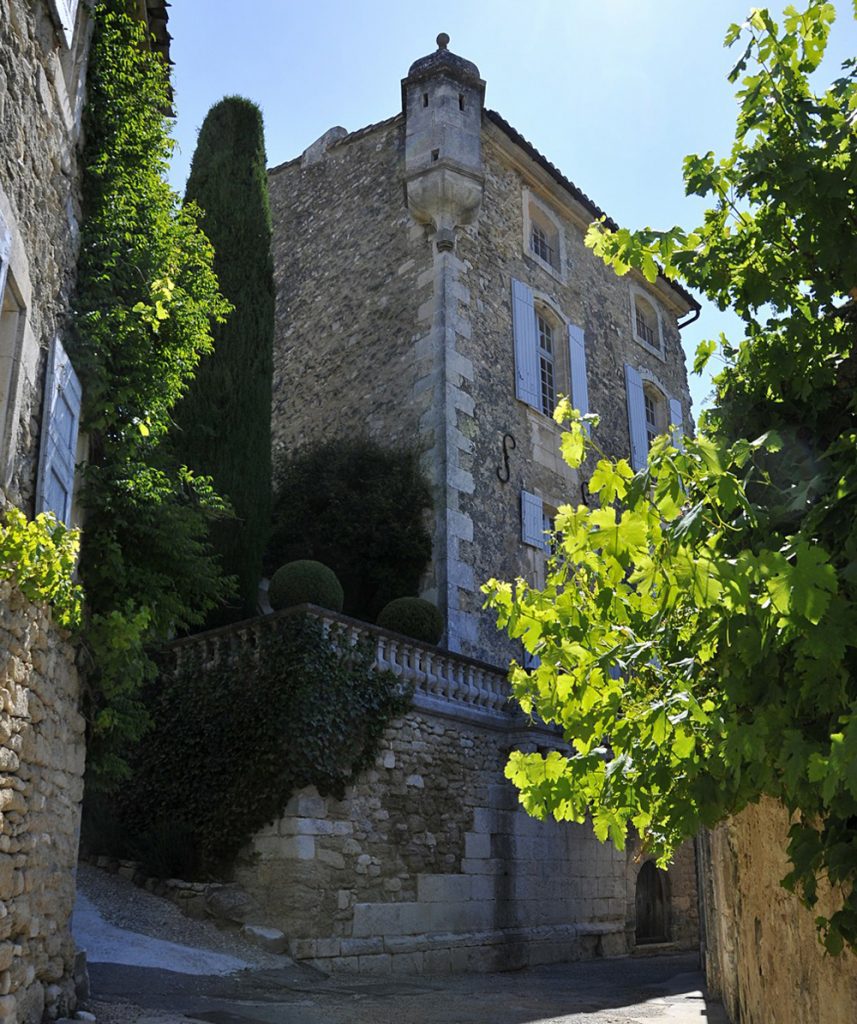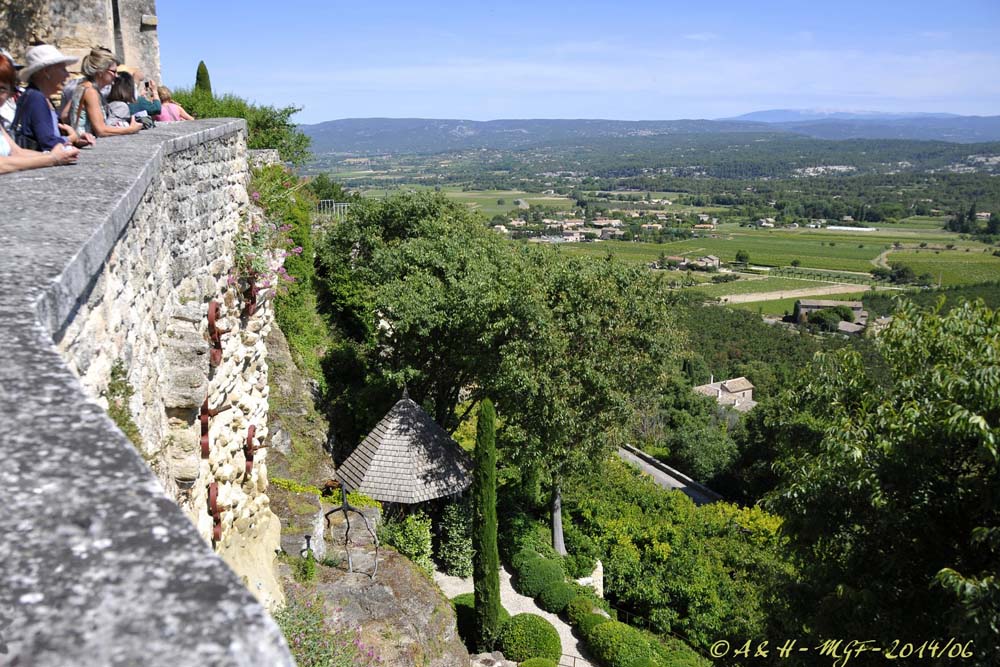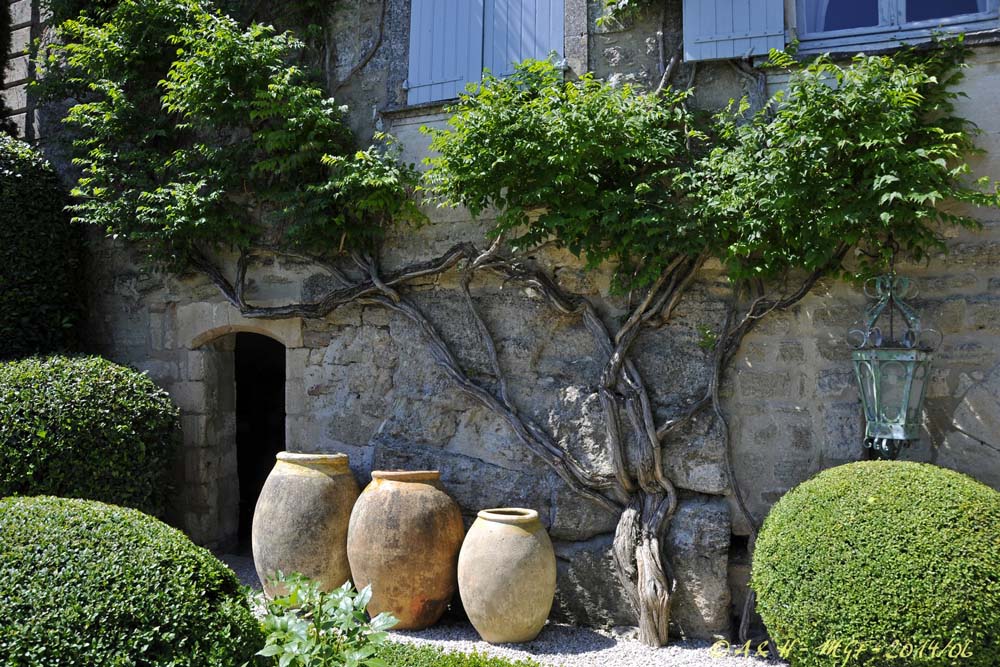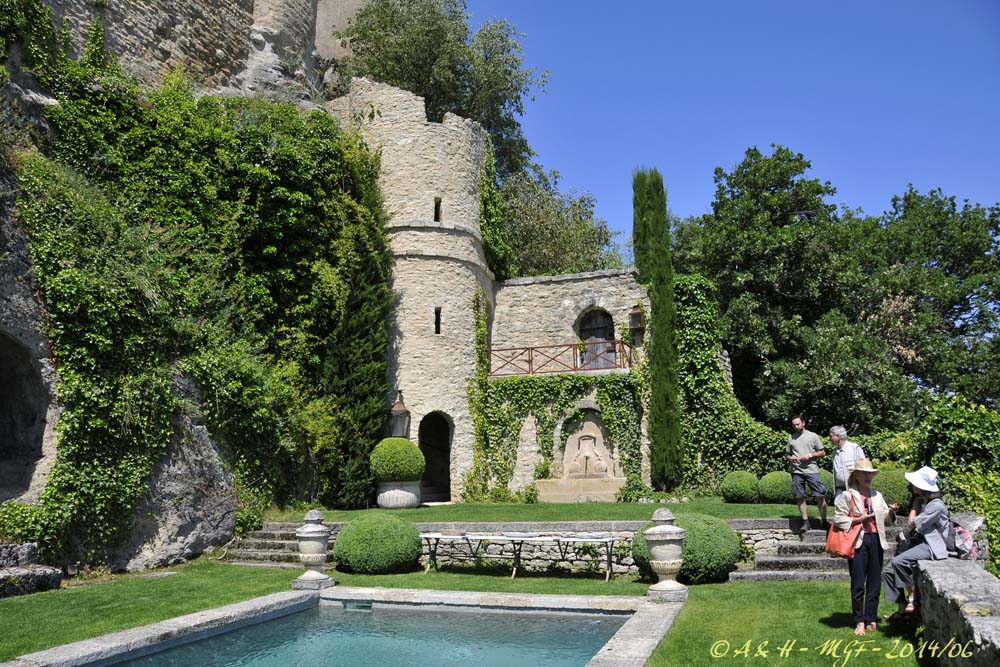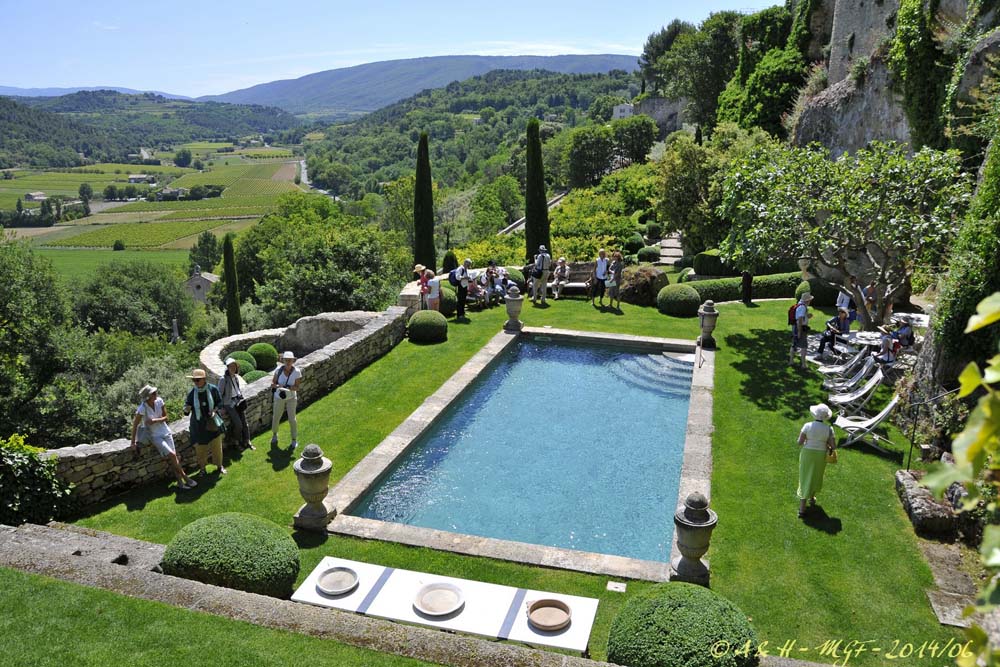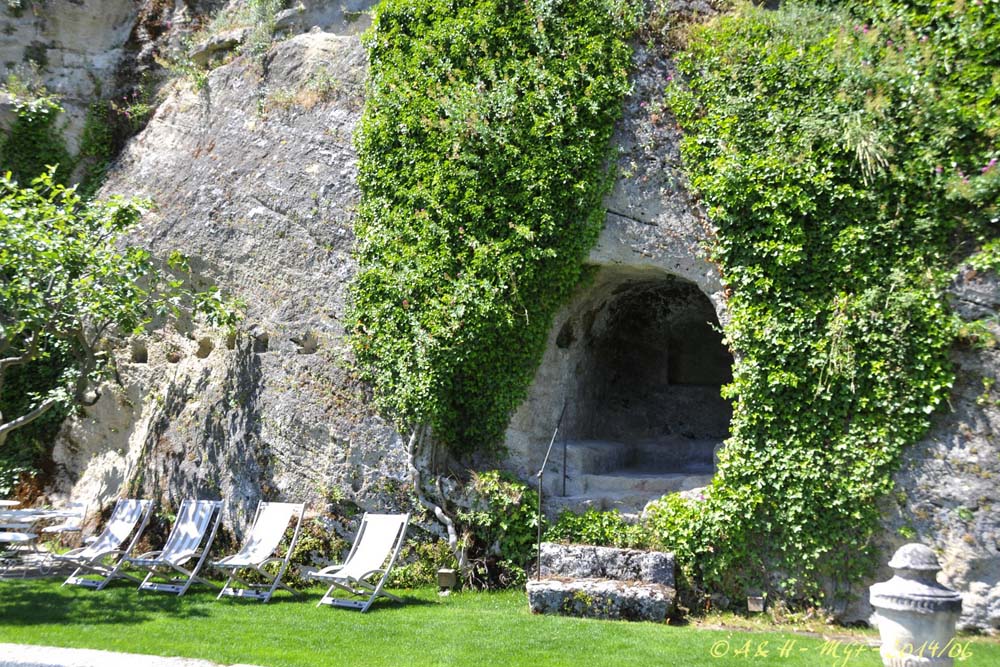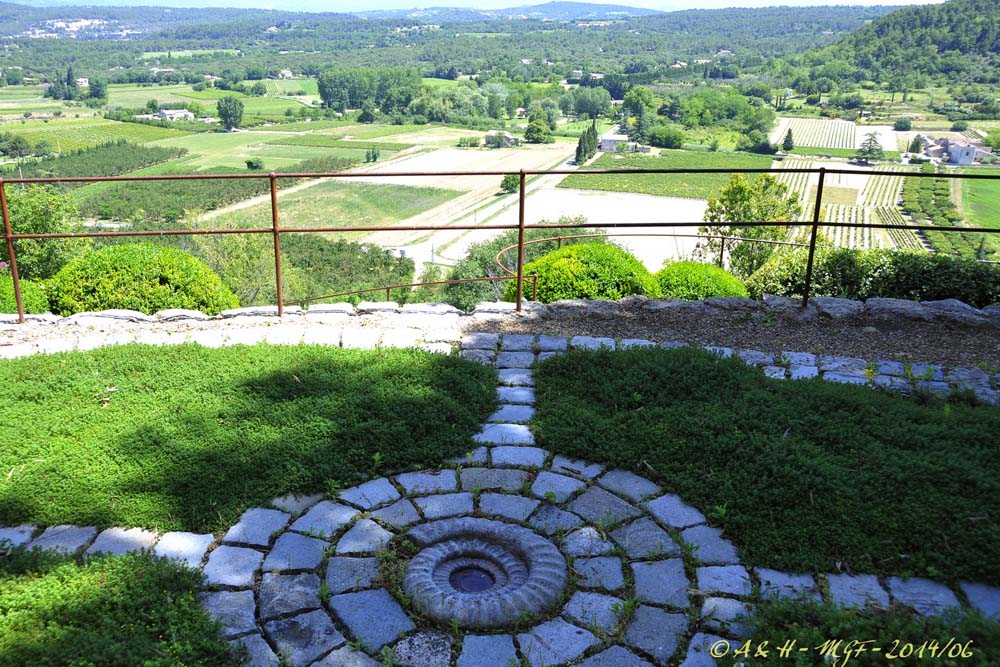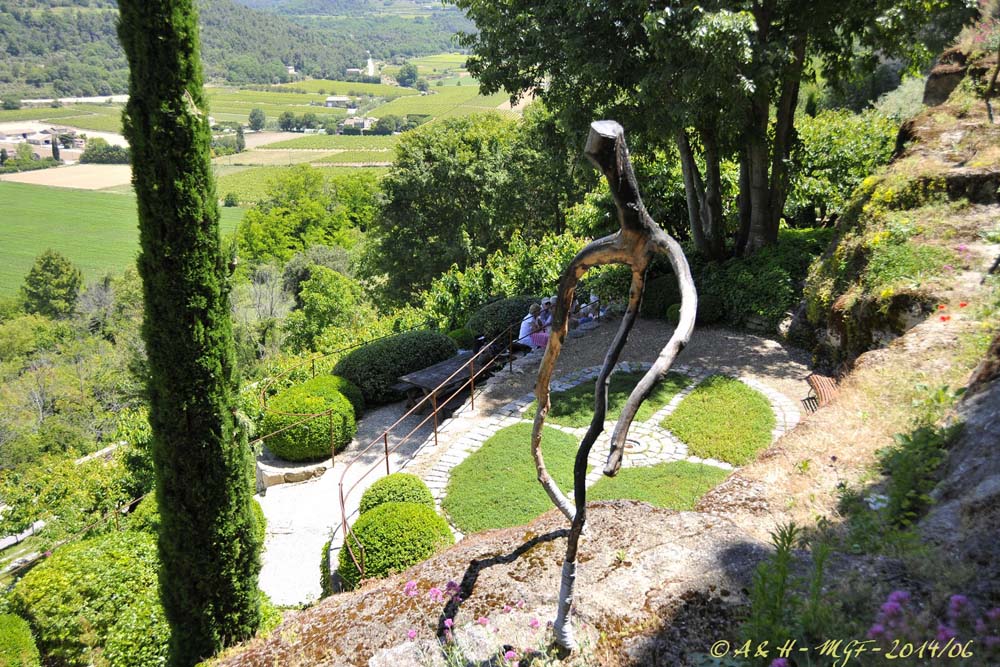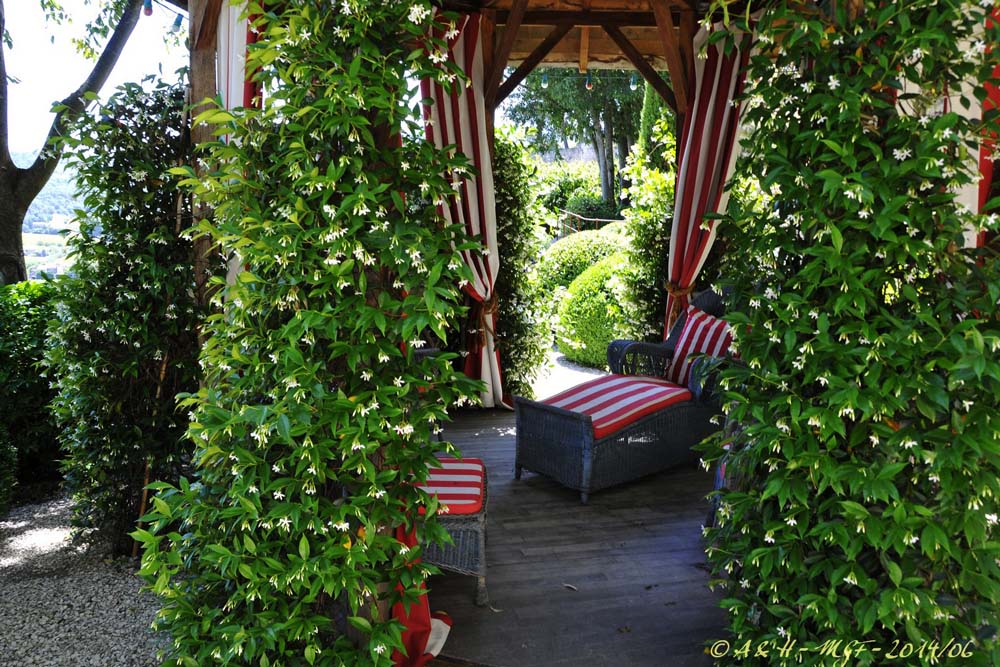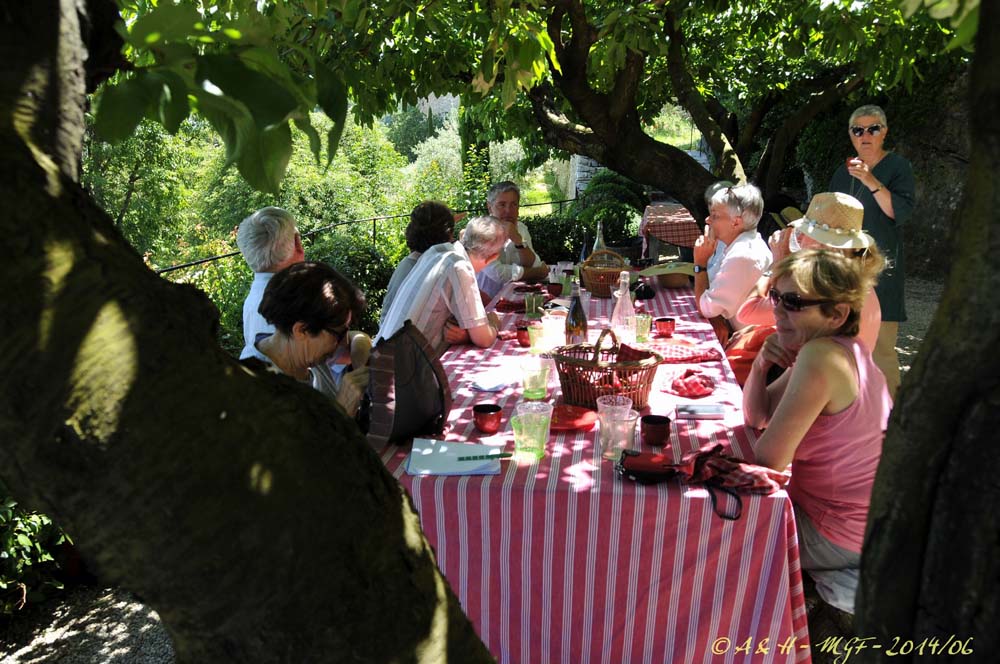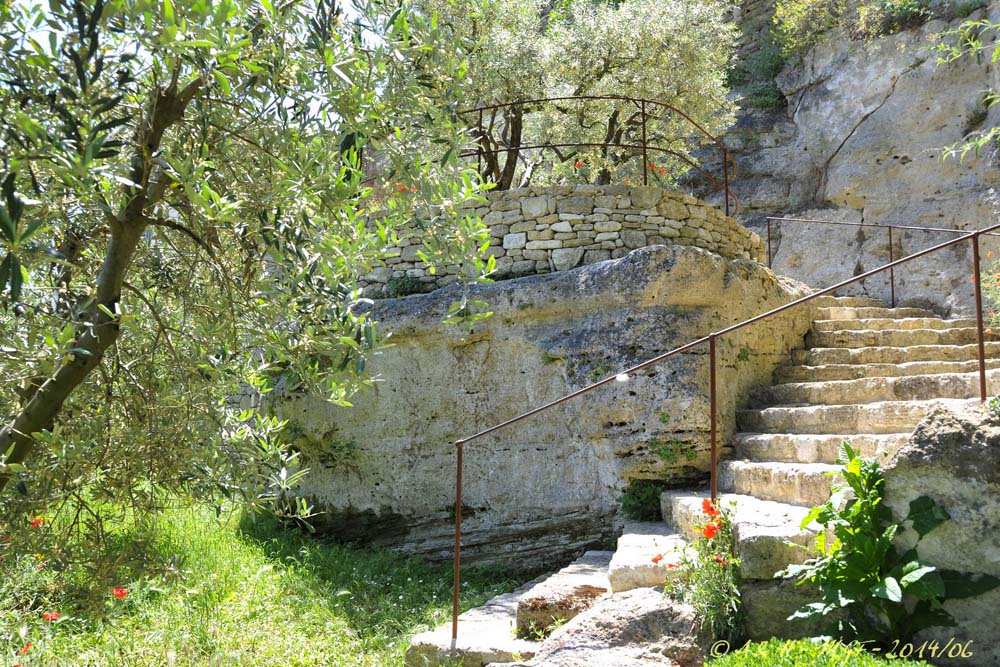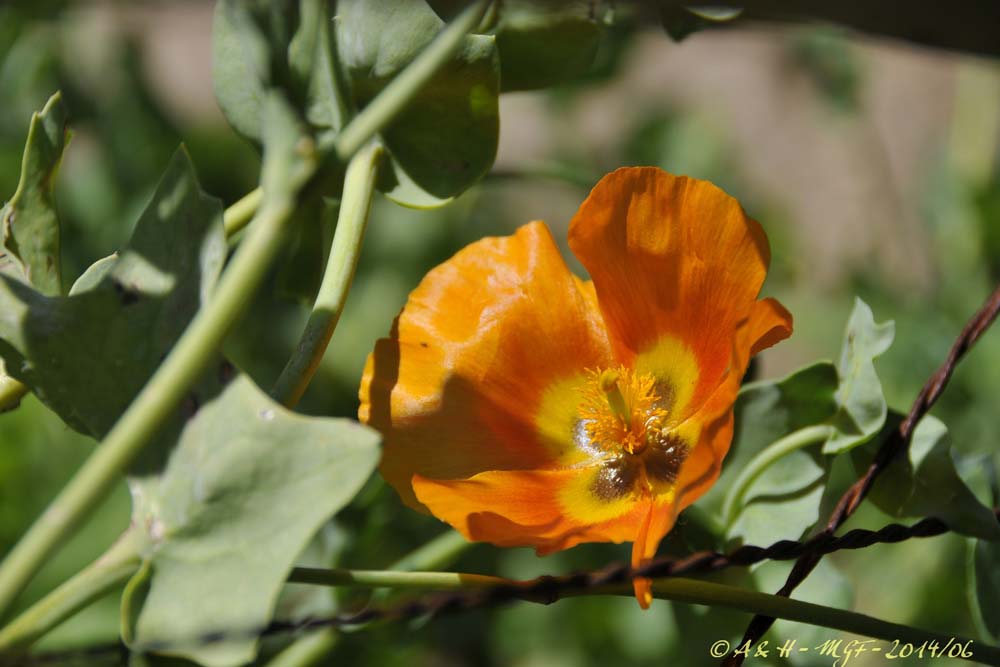June / juin 2014 – A visit to the garden of La Carmejane
Click on the images to enlarge them / Cliquez sur les images pour les agrandir
In the heart of the beautiful medieval hilltop village of Ménerbes stands La Carmejane, an 11th century bastide. Its 6,500 sq.m of terraced gardens nestled into the cliff face have spectacular views northwards across the Luberon to Mt. Ventoux.
We entered the courtyard through an archway and ancient wooden door and one immediately knew that this garden visit was going to be very special. Surrounded by Italian cypress (Cupressus sempervirens), climbing Iceberg roses, antique terracotta pots and topiary balls of Buxus sempervirens, we were led onto a terrace under a wisteria clad pergola with views to the Mt. Ventoux and over the perfectly laid out upper terraced garden.
The stunning blue of the agapanthus flowers contrasted with the simple green and white colour scheme. Neatly clipped box surrounded the beds of Rosa ‘Iceberg’ and everywhere was the sound of running water from the numerous fountains.
Elegant urns filled with white hydrangea and solanum decorated the terraces, along with containers of spiral-stemmed orange trees. There were several stylish and comfortable seating areas and one noticed the perfectly coordinated colour schemes of the fabrics used. Everywhere was a feast for the eye and we’d only just begun the visit! The celebrated garden designer Nicole de Vésian had a saying, “listen to the stones and they will speak” and when in 1996 the owners began to
restore the garden, along with the designer and interior decorator, Michel Biehn, this proved valuable advice.At this time there were no connecting stairs between the upper and lower terraces but one day, as Head Gardener Cédric Lafaye was pruning ivy from the rampart walls, he discovered an old archway. The owners decided that this would be the perfect place to construct a stone tower containing a spiral staircase to link the upper terrace to the pool and lower gardens.
Descending these stairs, we emerged onto a perfectly manicured lawn surrounding the swimming pool. Next to the pool, providing an element of surprise and historical interest, there is a 7th century grotto set into the rock face.
We were led on down to the less formal lower terraces passing through the Jardin des Fées with its interesting water feature, created at the landing point of the two halves of a huge boulder which had become dislodged from the cliff during the great storm of May 1993. Next, we paused to admire a huge fossilised ammonite laid into a circle of cobblestones and surrounded by wild thyme.
Then, looking up, we spied one of Marc Nucera’s wooden ‘walking men’ and a charming gazebo, Trachelospermum jasminioides climbing its walls and with red and white curtains and chair covers….what a perfect spot for a siesta!
Our hosts very generously provided a picnic lunch for us on one of the lower terraces in the shade of their cherry trees. We sat at tables laid with brightly coloured cloths, plates and glasses and enjoyed a delicious salad with pâté, ham, cheeses, wine and of course cherries.
After lunch, we explored a newly restored terrace which followed the edge of the ramparts and where mature olive trees had been planted. Then, descending again, we admired the ivy, cut into swags to decorate the retaining walls.
Colour is kept to a minimum at La Carmejane so it was an interesting surprise to find the soft yellow Rosa ‘Teasing Georgia’ clambering up walls beside the vegetable garden on the lowest terrace. We also spotted the lovely orange Glaucium corniculatum, with its poppy-type flower.
The garden of La Carmejane is a jewel amongst all those I have visited in Provence. Beautifully designed and totally adapted to its unique position in the village, it is a perfect combination of elegance and informality. I feel very privileged to have had the opportunity to see it.
Text: Tilly Chambers
Photographs: Hubert Nivière
![]()

